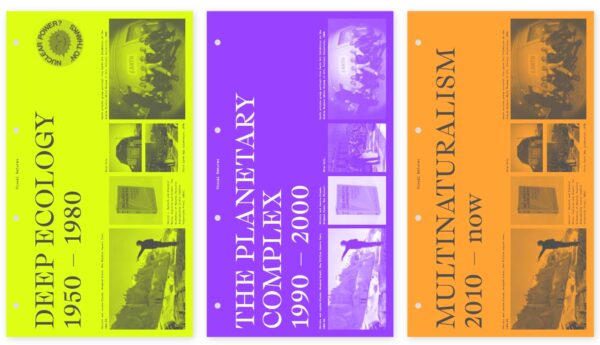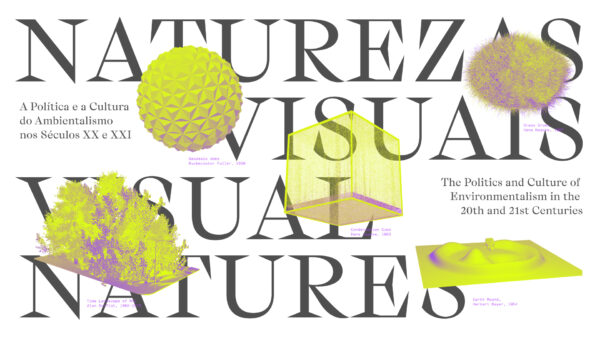This post refers to the reserach project and exhibition “Visual Natures – The Politics and Culture of Environmentalism in the XX and XXI Centuries” of which you can learn more a this other link. Here I delve into the contents and their presentation, as well as the unique tool that was developed to both aid the reserach process and its fruition by users.

Content organisation and thematic clusters
DEEP ECOLOGIES 1950s – 1980s [read the introduction here]
Earthworks: Expanded Fields
New Communalism
Technology and Environmental Consciousness
THE PLANETARY COMPLEX 1990s – 2000s [read the introduction here]
Ecovention: Environmental Reparations
Post-Human Politics and Aesthetics
The Anthropocene, Climate Justice and Political Ecology
MULTINATURALISM 2010s – present day [read the introduction here]
Augmented Nature and Terraforming
Speculative Ecologies and Post-Globalisation

Subjects of analysis and categories
Arts and Culture: Movements, People and Events / Works / Exhibitions / Critical Writing (books, catalogues)
Climate Science and Technology: People / Scientific Facts and Climate Events / Technological Inventions and Discoveries / Documentation (papers, books and publications)
Social Movements: Civic Demonstrations, Public Events, Non-Governmental Organisations
Global Governance: Governmental Organisations / Official Acts and Deliberations by Governmental Organisations / Documentation
Intersections among the selected contents are contextualised through the three thematic clusters and subclusters and move from the anthropocentric foundations of modern environmental thought, built on the exploitative legacy of western colonialism and the thought-regime of Cartesian man/nature dualism, towards the more-than-human ecologies informed by theoretical positions founded on non-binary cultural traditions of eco-centrism and multi-perspectivism of recent years.
The presentation allows to individuate historical and causal connections among facts, people and events concerning: the achievements of scientific progress in building climate knowledge and awareness of negative anthropogenic impact, as much as its opposing denialism by industrial interest groups; social and political mobilisations that support reparatory and equitable policies, as well as the recurring failures of intergovernmental cooperation; the artistic practices devoted to ecological interventionism and critical experimentalism around novel concepts of social mutuality, multi-species coexistence and biocentrism, as well as the enduring injustice and forms of industrial exploitation that still threaten the survival of indigenous and disenfranchised people, deplete natural resources and destroy biosystems.
How to navigate the Visual Natures’ interface
The research is presented in a custom digital interface designed and developed by the studio dotdotdot. You can browse the multimedia contents – images, videos, texts and audios – following the three main thematic chapters chronologically distributed across the 42-seat assembly designed by Carla Juaçaba, each provided with a touchscreen.
Up and down: by scrolling vertically you can compare findings across the four subjects of analysis (i.e., Arts and Culture – Climate Science and Technology – Social Movements – Global Governance) and their sub-typologies (for example: notable figures, scientific findings and facts, cultural events, artworks, social movements, books, etc.).
Left and right: by swiping horizontally you move through time.